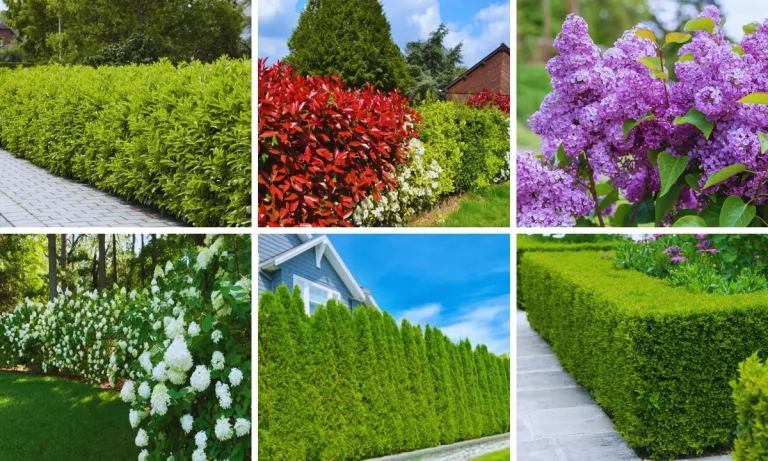17 Garden Edging Ideas to Elevate Your Outdoor Spaces
Garden edging is a fantastic way to define your outdoor spaces, add structure to your landscaping, and create clean, well-organized garden beds. Whether you’re looking to create a modern and sleek look or something more rustic and natural, garden edging serves both functional and aesthetic purposes. In this article, we’ll explore 17 garden edging ideas that will inspire you to give your garden a fresh update. From stone to wood to metal, these ideas will provide you with the perfect way to create defined borders and highlight your plantings.
1. Stone Garden Edging
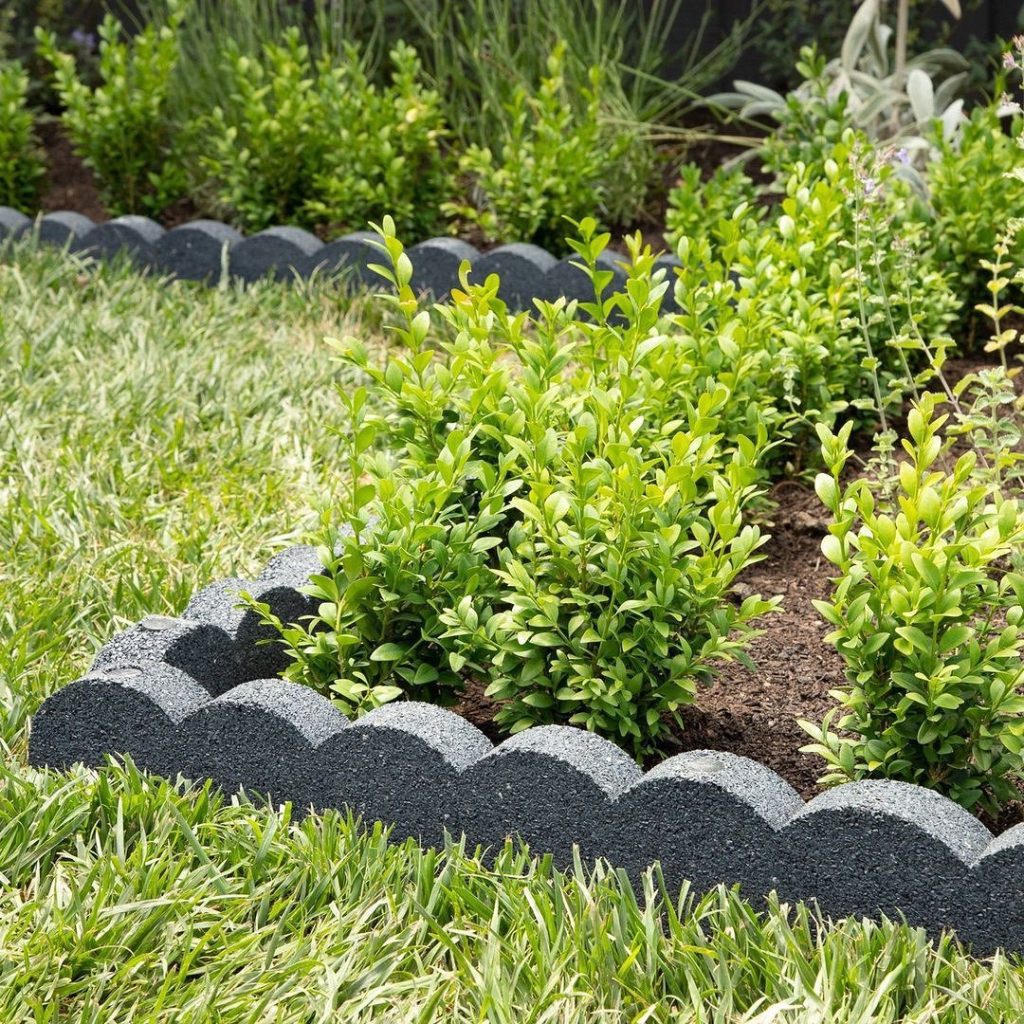
Stone garden edging is timeless and works well with almost any type of landscape. Whether you opt for large, natural stones or smaller pebbles, stone edging provides a rugged, earthy charm. For a more polished look, you can choose smooth river rocks or flagstones that align neatly along the garden edge.
One of the best aspects of stone garden edging is its versatility. You can use it for formal gardens with crisp, clean lines, or you can place larger, uneven stones for a more natural, rustic style. Stones also work well as barriers to keep mulch, soil, and gravel in place, preventing them from spilling into walkways or lawns. The variety of sizes and colors allows you to customize the edging to fit your garden’s theme, whether you’re going for a modern, rustic, or cottage garden aesthetic.
To install, create a shallow trench along the garden bed, ensuring that the stones are slightly embedded in the soil to prevent them from shifting. You can add landscape fabric underneath the stones to minimize weed growth and prolong the life of the stones.
2. Brick Edging
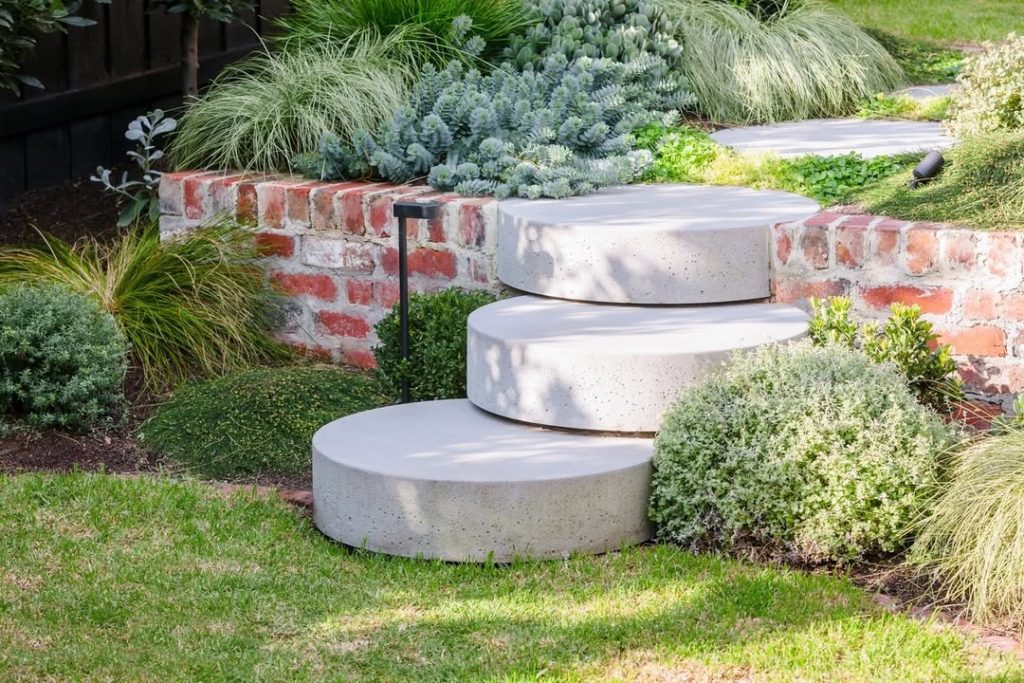
For a more classic, neat, and structured look, brick edging can offer a clean and polished finish to your garden beds. Bricks can be laid in various patterns such as a straight line, a herringbone design, or even in a circular formation around specific plants or features. This type of edging works especially well for traditional gardens or homes with vintage architecture.
One of the advantages of brick is its durability. It holds up well over time and doesn’t require much maintenance. The reddish tones of brick create a warm, inviting atmosphere, particularly when paired with plants that have vibrant green foliage or colorful blooms. If you’re looking for a more eco-friendly option, you can opt for reclaimed bricks, which add both character and sustainability to your garden.
For installation, create a trench along your garden’s border and place the bricks tightly together. You can also use mortar to fix them in place for extra stability. This edging style can be as high or low as you like, depending on your desired effect.
3. Wood Log Edging

Wood log edging adds a rustic, natural element to your garden, making it an excellent choice for country-style or woodland-inspired landscapes. You can use whole tree trunks, logs, or even cut sections of a larger log to create a boundary around your garden. The rough, organic texture of the wood offers a charming contrast to the smoother lines of more modern elements in your yard.
For a practical touch, you can even hollow out the center of the logs to plant flowers, herbs, or small shrubs. This will add depth and texture to your garden while keeping the logs firmly in place.
The installation process for wood log edging is simple. Simply place the logs along the garden’s perimeter and secure them with garden stakes if necessary. Over time, the logs will weather beautifully, taking on a silver-gray patina that adds to their rustic charm.
4. Metal Edging
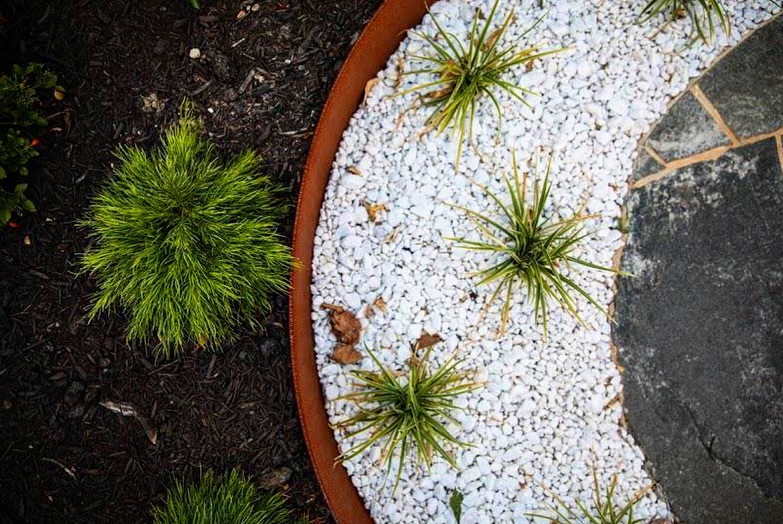
For a sleek and modern look, metal edging is an excellent choice. Galvanized steel, aluminum, or copper can be used to create thin, clean lines that separate your garden beds from other areas. Metal edging is particularly effective at creating defined borders that hold their shape and don’t shift over time. It’s a perfect option for minimalistic or contemporary gardens where sharp edges and precise design are key.
Metal edging has the added benefit of being long-lasting and resistant to the elements. Unlike wood, it won’t rot, and unlike stone, it’s less likely to shift or move over time. Choose a metal finish that complements your garden’s aesthetic. Galvanized steel offers a modern, industrial look, while copper creates an elegant, warm contrast against green foliage.
Installing metal edging is relatively straightforward. Simply drive the metal edging into the ground with a mallet, ensuring it stays flush with the soil for a seamless look. It’s especially effective for maintaining neat lines in gardens that need to be kept tidy.
5. Concrete Edging
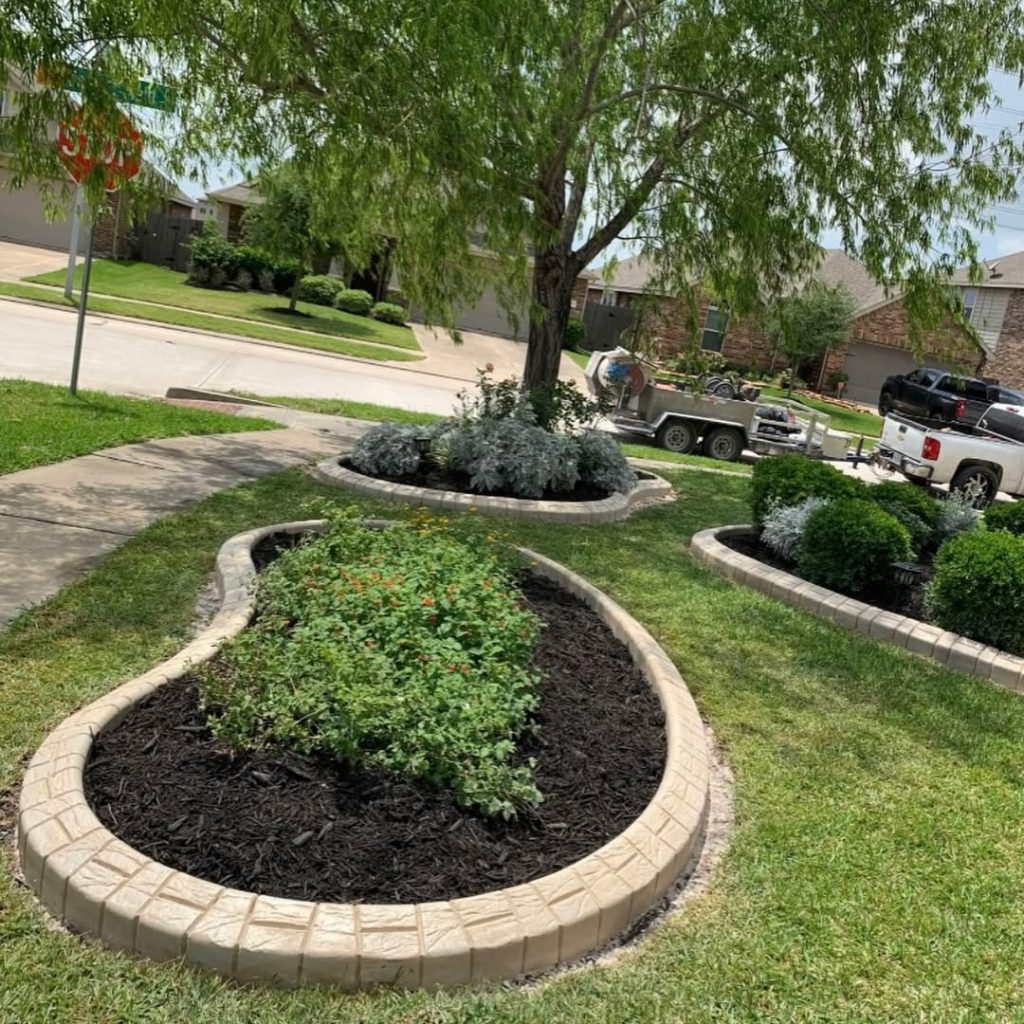
Concrete is another great material for creating a modern, clean edge for your garden. This type of edging can be customized in a range of styles and finishes, including smooth, textured, or even stamped concrete that mimics the look of stone or brick. Concrete offers a sleek, durable solution for those who want a low-maintenance, long-lasting option that can withstand weather and wear.
One of the advantages of concrete edging is that it can be molded to create curves, straight lines, or other unique designs, making it perfect for those who want a custom touch. Concrete also holds up very well against weeds, as its smooth surface makes it difficult for plants to grow through.
To install, you’ll need to pour the concrete mixture into a form or mold that you’ve created along the garden’s perimeter. Once set, you can finish it with paint or a sealant to add color or extra protection against the elements.
6. Gravel Edging
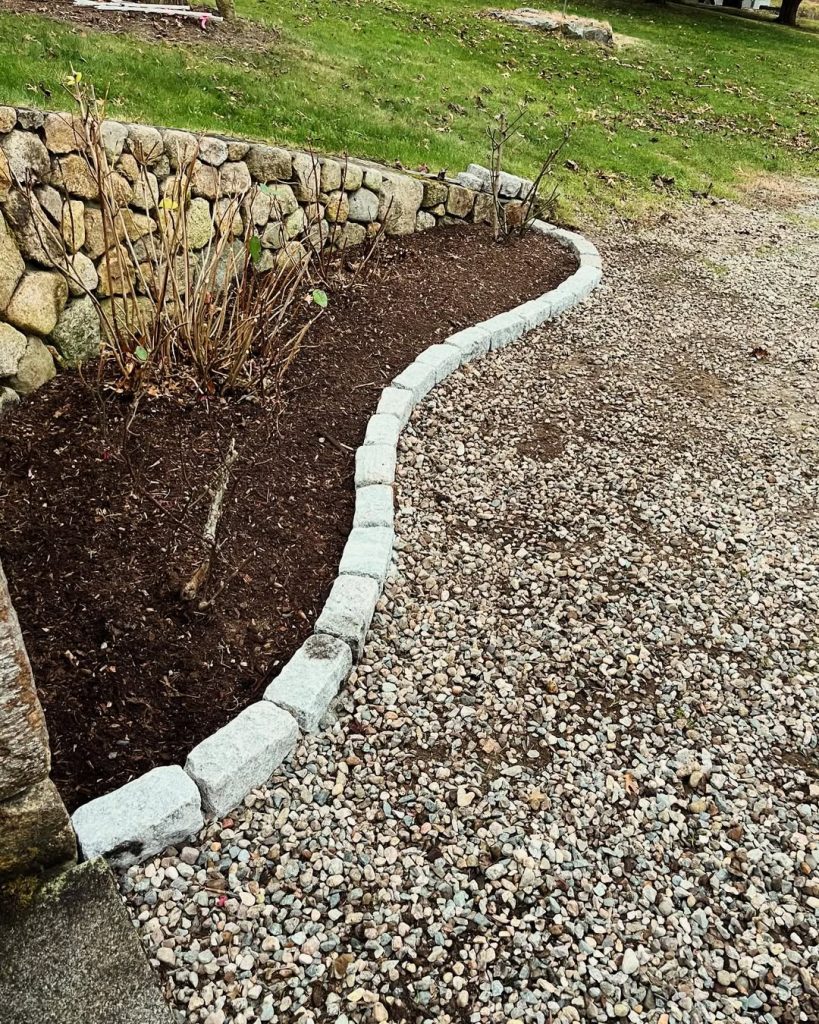
Gravel is a versatile and affordable material that works well as garden edging. It can be used in a variety of ways, from simply creating a border to incorporating it into larger design elements like pathways or patios. Gravel is perfect for creating a rustic or natural-looking edge that blends seamlessly with the landscape.
You can choose from a range of gravel types, including pea gravel, river rocks, or crushed stone, depending on your desired look. Gravel borders are especially useful in gardens that need drainage, as the loose rocks allow water to flow through and prevent puddling.
For installation, dig a shallow trench along your garden’s border and fill it with a few inches of gravel. You can place landscape fabric underneath to prevent weeds from growing through, and then adjust the gravel to ensure it stays in place. Gravel edging is perfect for those who want a low-maintenance, flexible solution for their garden.
7. Wooden Fence Edging
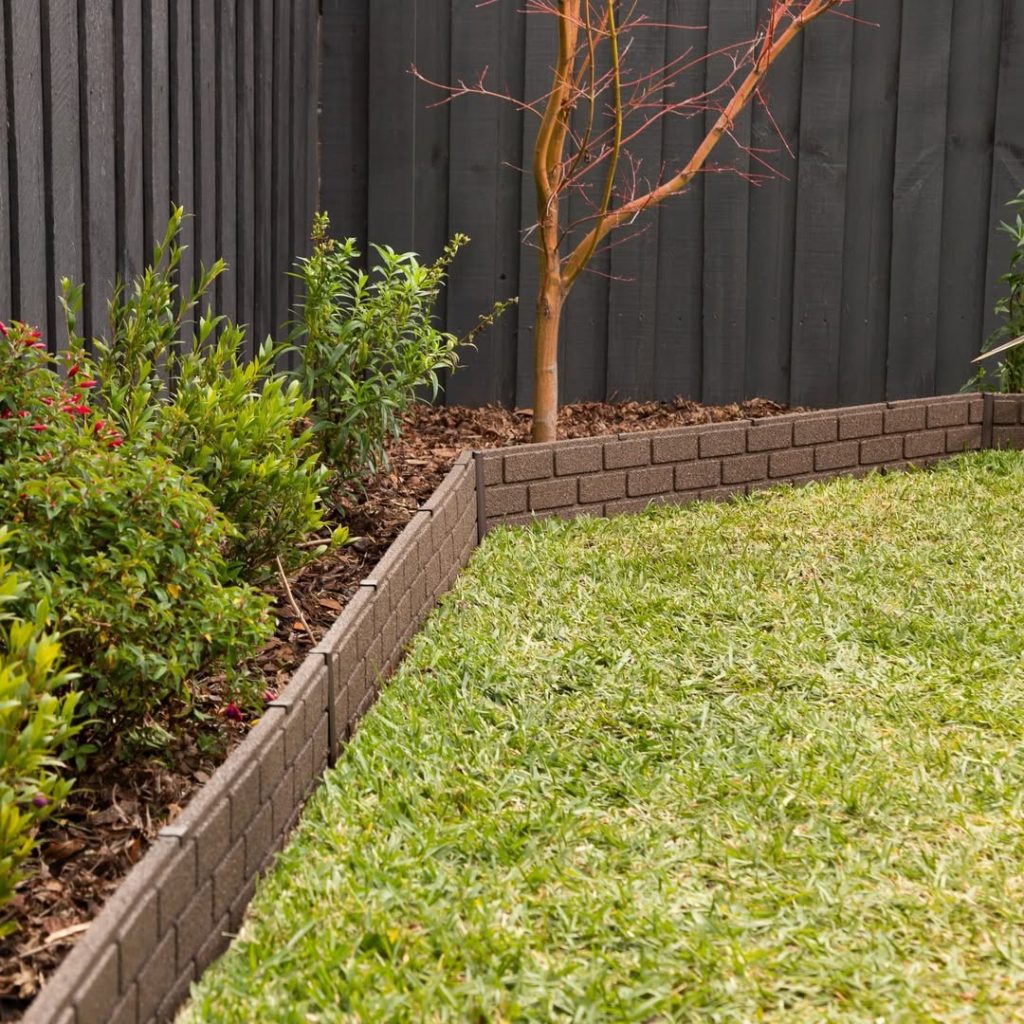
If you’re looking to add a more defined, solid border around your garden, a wooden fence edging can do the trick. It’s a great option for those who want a bit more privacy or wish to create a sharp, delineated boundary between their garden and lawn or neighbor’s yard. Wooden fence edgings can be made from individual wooden slats, or you can install a short picket fence for a charming, cottage-style look.
For a more natural, relaxed garden aesthetic, you can use split rail fences or simple wooden planks. These styles blend well with natural elements in the garden and won’t overwhelm the space. For a more polished or modern look, use a wooden fence with sleek, vertical planks to add height and structure.
Wooden fence edging requires installation similar to a small fence. You will need posts to secure the planks and ensure they stay in place. Regular maintenance, such as staining or sealing, will help prolong the life of the wood and maintain its aesthetic appeal.
8. Terracotta Edging

Terracotta is an appealing, warm-colored material that can bring a Mediterranean or Southwestern flair to your garden. This material is often used in the form of terracotta pots or bricks, and it provides a soft, natural look that’s perfect for gardens with a more casual or bohemian feel.
Terracotta edging looks particularly stunning when paired with plants that have a lot of texture and color, such as succulents, lavender, or bougainvillea. You can even create a beautiful border by cutting terracotta pots in half and embedding them into the soil, creating a rustic, yet sophisticated, look.
To install, dig a shallow trench and place your terracotta edging along the perimeter of your garden. You can interlock the edges of the pots or arrange them in a circular pattern around specific plants for a unique and personalized design.
9. Cobblestone Edging

Cobblestones offer a classic, elegant look that never goes out of style. Whether you’re aiming for a more traditional or a rustic European-inspired garden, cobblestone edging adds both beauty and function to your landscaping. The irregular shape of cobblestones creates an earthy, hand-crafted feel that blends seamlessly with both formal and informal garden designs.
Cobblestone edging is perfect for creating winding paths, garden borders, or defining flower beds. You can opt for traditional stone cobbles, or mix it up with larger pavers for a more modern interpretation.
Installing cobblestones is similar to laying brick or stone edging. Create a trench and carefully position each stone along the edge of your garden. Fill any gaps with smaller gravel or sand to help stabilize the cobblestones and keep them in place.
10. Plastic Edging

Plastic garden edging is a cost-effective and practical option for those looking to create neat, straight lines without much effort. Often made from recycled plastic, this type of edging is flexible, lightweight, and easy to install. While it may not have the aesthetic appeal of stone or metal, it does offer a simple and functional solution for basic landscaping projects.
Plastic edging is especially effective in maintaining tidy garden beds and preventing grass or weeds from encroaching on your plants. It’s available in various colors and textures, including options that mimic the appearance of wood or stone.
To install plastic edging, simply stake it into the ground, and secure the edges to create a seamless transition between garden beds and surrounding spaces. This type of edging is ideal for low-maintenance garden borders.
11. Shell Edging
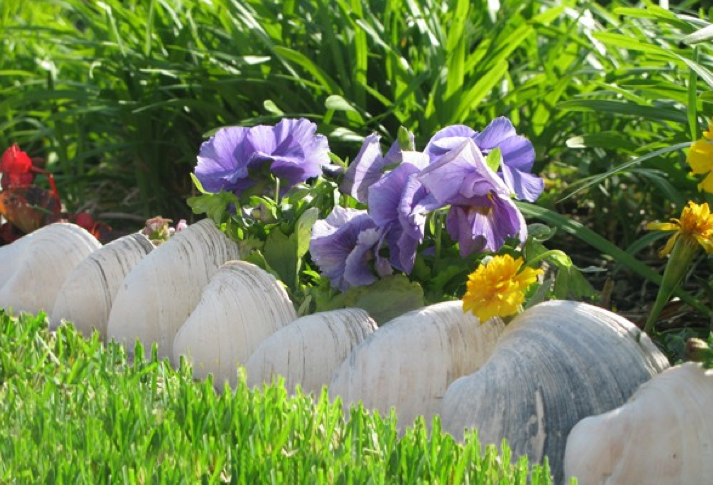
If you’re aiming for a coastal or beach-inspired look in your garden, shell edging is a fantastic choice. The natural beauty of seashells, whether collected from a local beach or purchased from a garden center, brings a unique touch to your garden borders. This material is perfect for those looking to add texture and interest without overwhelming the garden’s natural beauty.
Shells are especially effective in creating a soft, natural boundary around flower beds or around water features like ponds or fountains. The light, reflective quality of the shells contrasts beautifully with darker soils and lush greenery. To make your shell edging even more unique, you can mix various types of shells, including larger conchs or smaller scallops, creating a layered, organic look.
To install, create a shallow trench along the garden edge and place the shells closely together, ensuring they are embedded in the soil for stability. You can even combine shells with other materials like gravel or sand for added texture.
12. Bamboo Edging
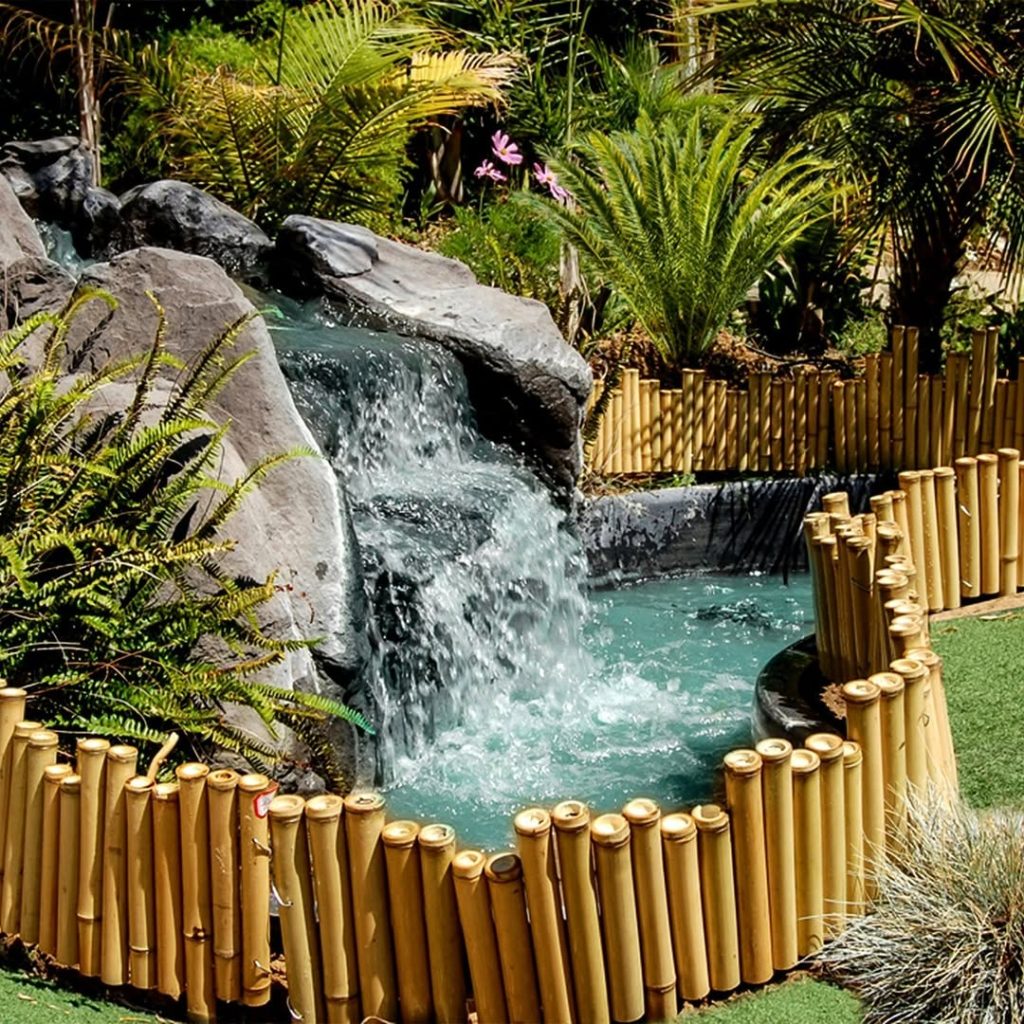
Bamboo is a fantastic option for adding a Zen-like or tropical feel to your garden. With its elegant, tall stalks, bamboo edging creates a soft yet defined boundary. This natural material is highly durable and adds a distinctive visual element to any garden style, from contemporary to tropical or even Asian-inspired landscapes.
Bamboo is great for privacy and can serve as a barrier to keep plants or garden beds separate from the rest of your lawn. You can create a dense bamboo border by planting it in the ground, or for a more straightforward solution, use bamboo fencing rolled into place along the edge of your garden.
The installation process for bamboo edging can be as simple as staking bamboo poles along the border or using bamboo fencing rolls that are secured with stakes or wire. Over time, bamboo will add a mature, textured look to your garden as the poles grow and thicken.
13. Glass Edging
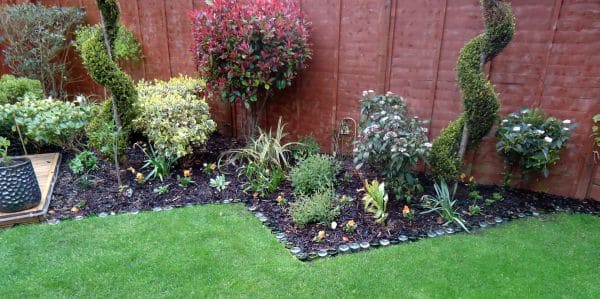
For a truly modern and unique look, glass edging offers a chic, high-end appeal. Glass borders can be used to create striking, contemporary garden designs, especially when paired with minimalist or modern outdoor furniture. The reflective properties of glass add a sparkling effect to your garden, creating a sophisticated visual element that is both functional and beautiful.
Glass can be installed in various forms, such as clear, frosted, or colored glass panels or tiles. These materials allow light to shine through, adding a sense of airiness to your outdoor space. Glass edging works especially well around sleek, modern landscaping or minimalist gardens.
To install glass edging, you can set glass panels into the ground, similar to how you would install metal or concrete edging. Be sure to use tempered glass for durability and safety, as it is designed to withstand the elements and outdoor conditions.
14. Recycled Materials Edging

Recycled materials, such as old tires, bottles, or reclaimed wood, can be used to create eco-friendly and budget-conscious garden edging. Not only does this option help reduce waste, but it also brings a creative, upcycled look to your outdoor space. Recycled materials are often readily available and can be customized to fit your garden’s aesthetic.
Tires, for example, can be stacked to create a rustic, layered look, while glass bottles can be buried neck-down to form a colorful border. Reclaimed wood pieces, such as old pallet boards, can be used to create a more structured, rustic edge.
Installing recycled materials as edging can involve stacking, stacking, or burying the items, depending on the material and desired effect. Using eco-friendly options for your garden will help you achieve a charming, personalized look while promoting sustainability.
15. Turf Edging

Turf edging is a great way to integrate your garden beds seamlessly with your lawn. It works by creating a crisp, green edge along your garden’s perimeter, maintaining a continuous look between grass and plants. Turf edging also provides a low-maintenance solution, as it blends well with grassy areas and doesn’t require constant upkeep.
The natural appearance of turf also works well in any garden style, whether modern, traditional, or casual. It softens the edge of garden beds and adds a fresh, clean look. Turf can be especially useful for gardens that need a more informal and relaxed feel, allowing for smooth transitions between different garden zones.
To install turf edging, simply roll out turf along your garden’s perimeter and trim it neatly to fit the desired border. The result is a natural, green edge that keeps weeds out while maintaining the flow of your outdoor space.
16. Paver Edging
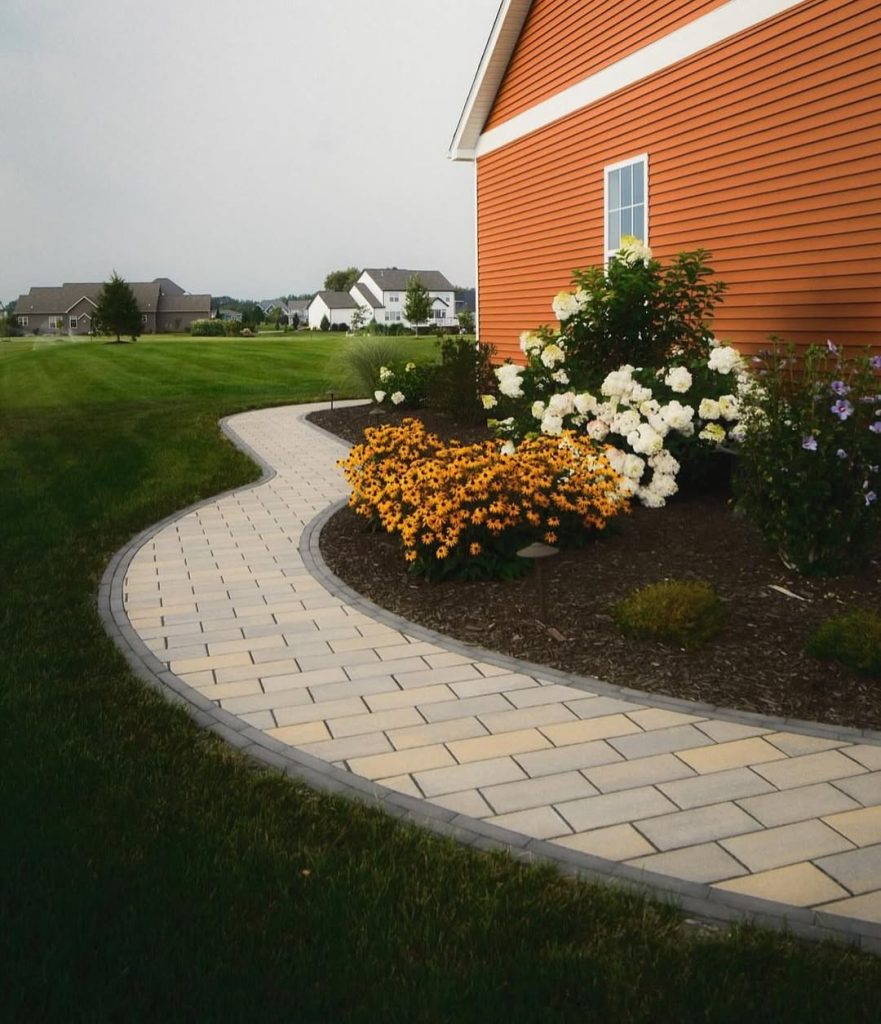
Paver edging is perfect for adding structure and stability to your garden while maintaining a more polished, refined look. Pavers are versatile, available in a wide variety of sizes, shapes, and colors, and can be arranged in various patterns, such as straight lines, curves, or even intricate designs. This type of edging works especially well for creating defined borders around formal garden beds, pathways, or driveways.
Not only does paver edging create a crisp, clean look, but it also helps maintain the integrity of your landscaping by keeping mulch, soil, or gravel in place. Pavers are durable and require minimal maintenance, making them a practical solution for homeowners who want a functional, long-lasting edge.
To install paver edging, begin by digging a trench along your garden’s border. Place the pavers tightly together, ensuring that they are level and secure. You can also use sand or gravel between the pavers to ensure they stay in place and prevent shifting.
17. Reclaimed Wood Planks

Reclaimed wood planks offer a rustic, eco-friendly way to edge your garden while adding character and charm. This material can range from weathered wood to repurposed boards from old fences, barns, or buildings, giving your garden a personalized, historic feel. Reclaimed wood is ideal for country-style, cottage, or farmhouse gardens.
The beauty of reclaimed wood planks lies in their imperfections—each piece has its own texture, color, and history. They create a more relaxed, organic look than stone or brick, blending effortlessly with garden beds, lawns, or even patios.
To install, simply place the planks along the garden edge and secure them with stakes, screws, or wire. The aged look of reclaimed wood will complement flowers, shrubs, and trees, providing a cozy, inviting atmosphere to your garden.
Conclusion
Garden edging is a fantastic way to add structure, style, and functionality to your outdoor spaces. Whether you’re looking for something modern and sleek or rustic and natural, there are countless options to choose from. From stone and brick to wood and bamboo, the materials available for garden edging allow you to express your personal style while maintaining a well-kept, organized garden.
By incorporating one or more of these 17 garden edging ideas, you can easily transform your garden into a beautiful, defined space that enhances your outdoor living experience. So, whether you’re creating a peaceful retreat, a vibrant flower bed, or a low-maintenance vegetable garden, the right edging can make all the difference in elevating your landscape.
The beauty of these edging ideas is that they can be customized to fit any style, from contemporary to classic, and they offer practical solutions for controlling soil, preventing weeds, and keeping your garden neat and tidy. Choose the one that fits your garden’s aesthetic, and enjoy the benefits of a well-defined outdoor space that looks as good as it functions!
4o mini

